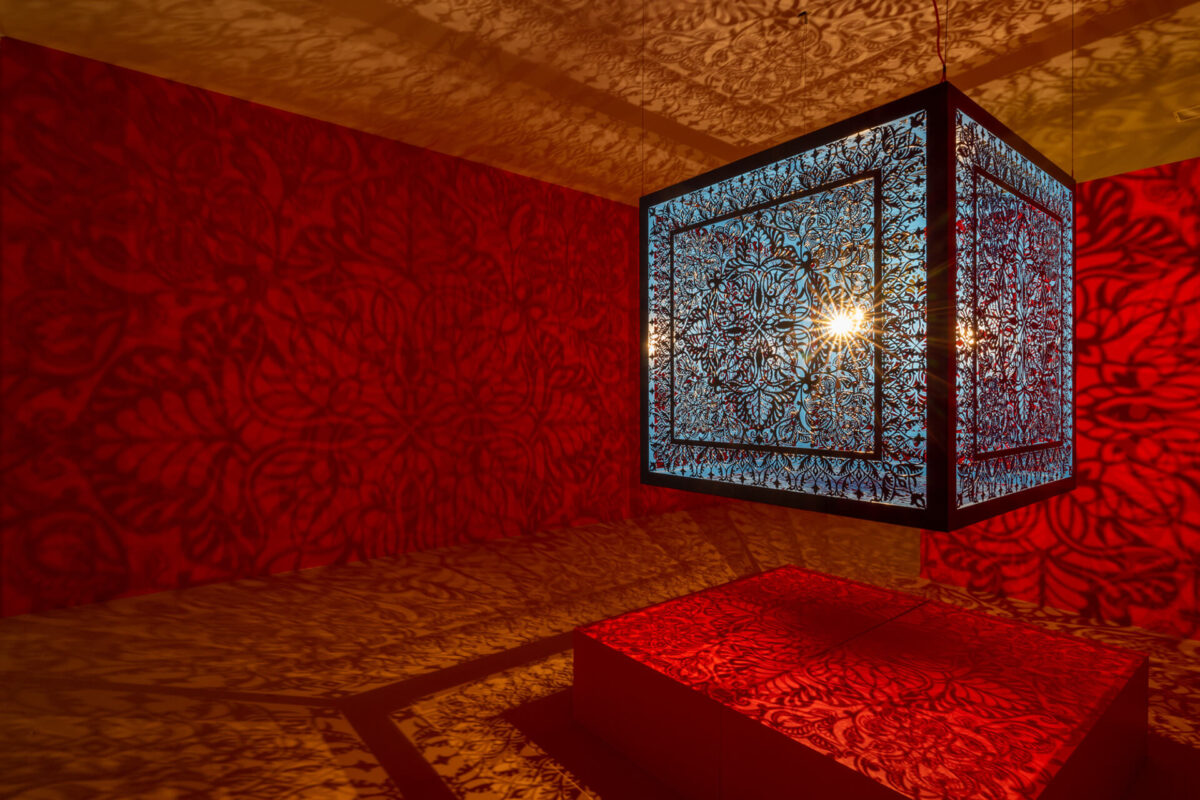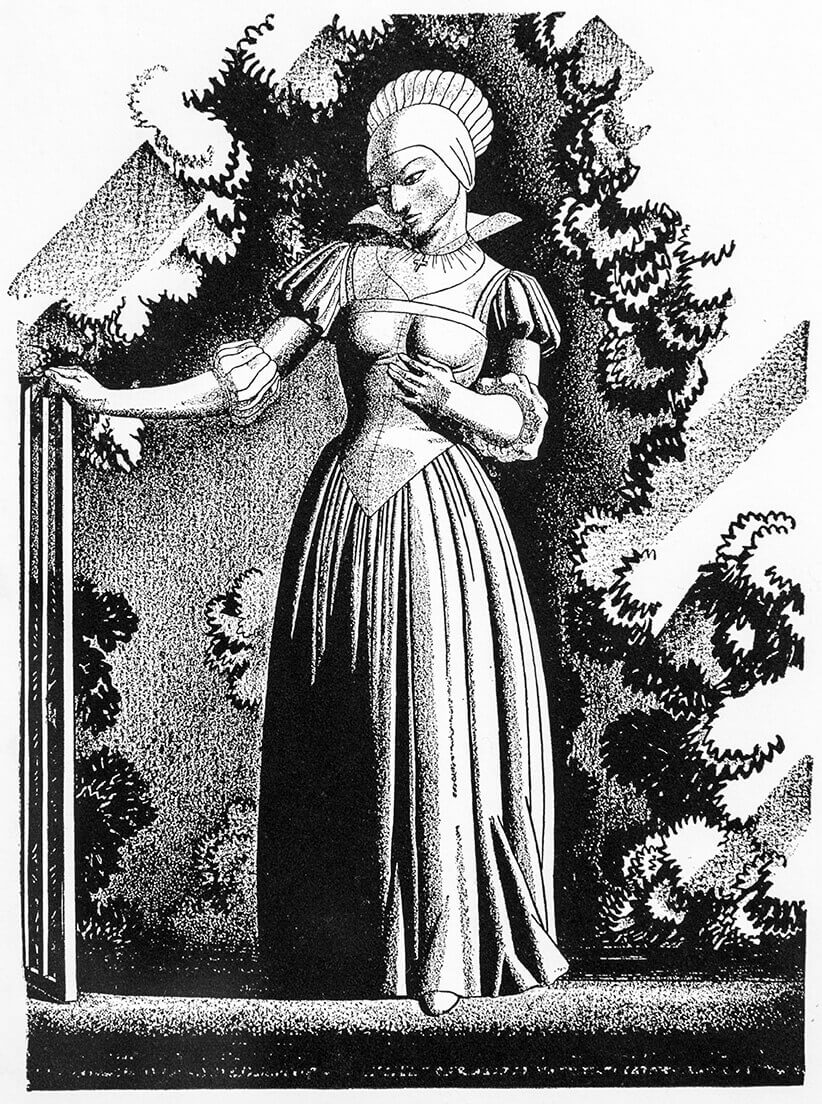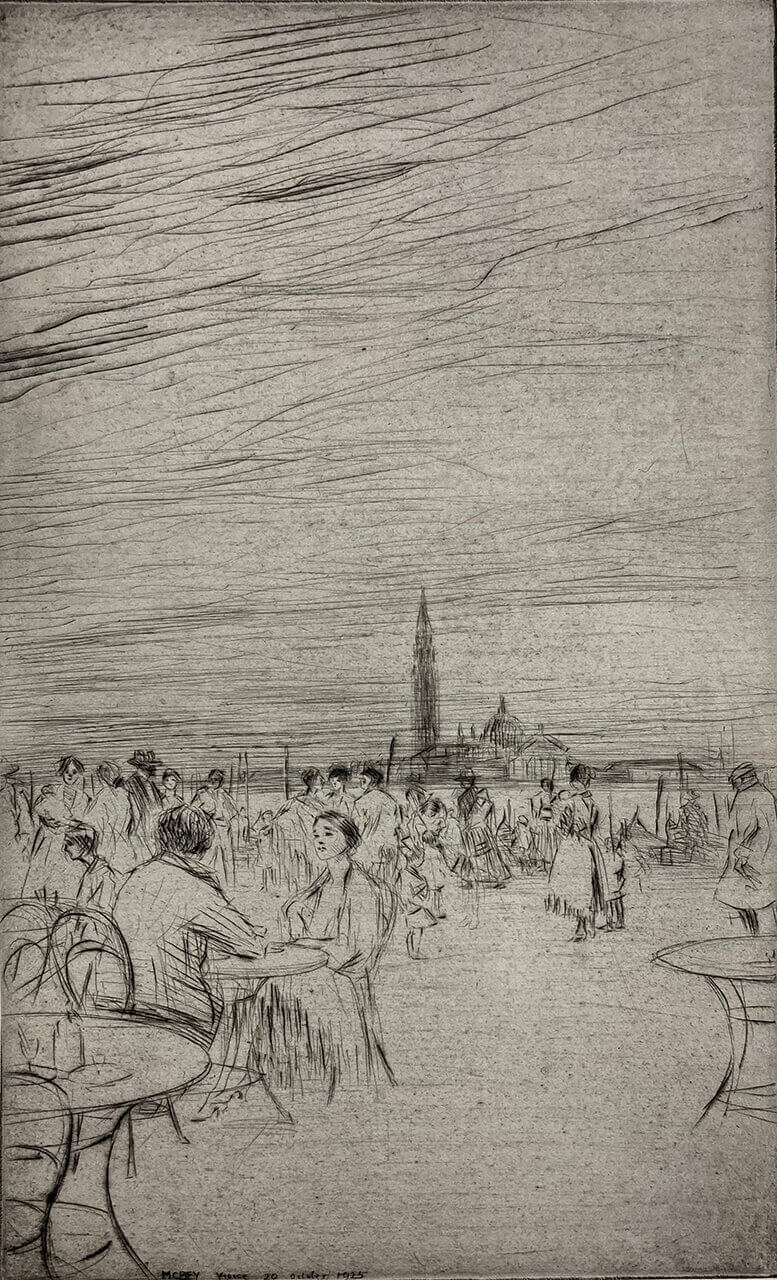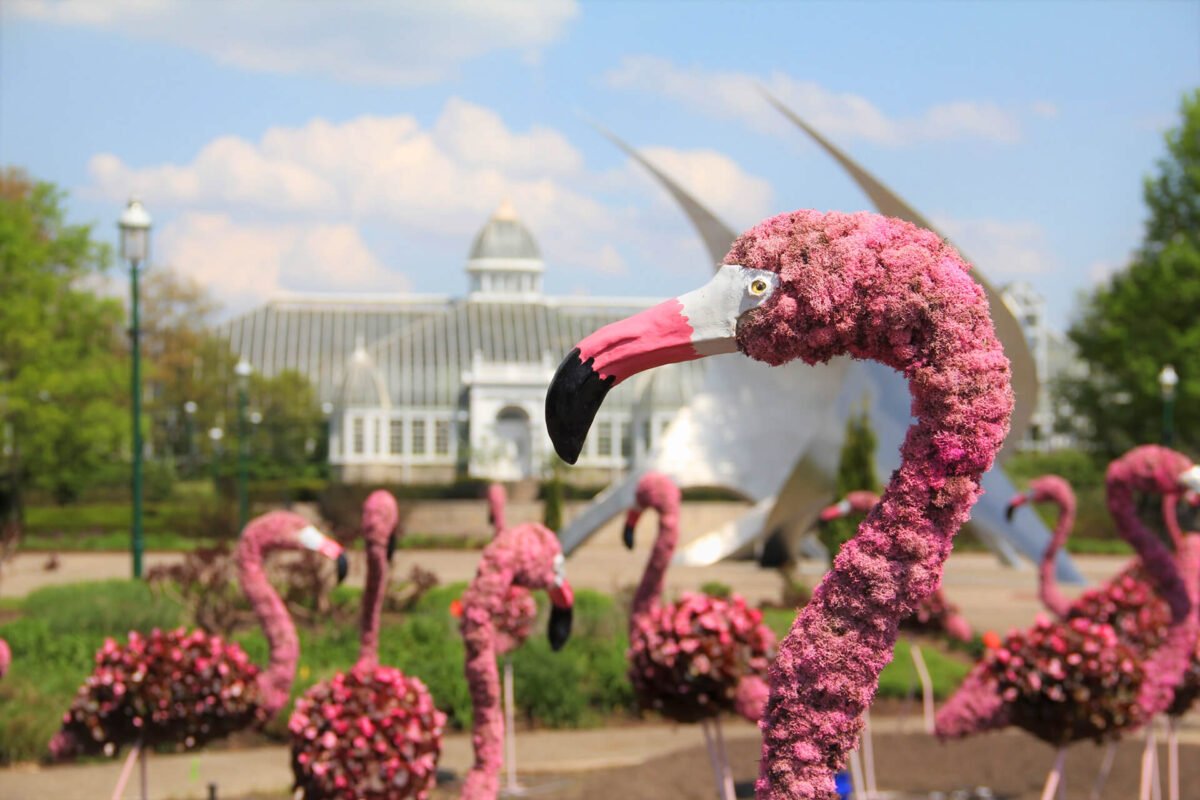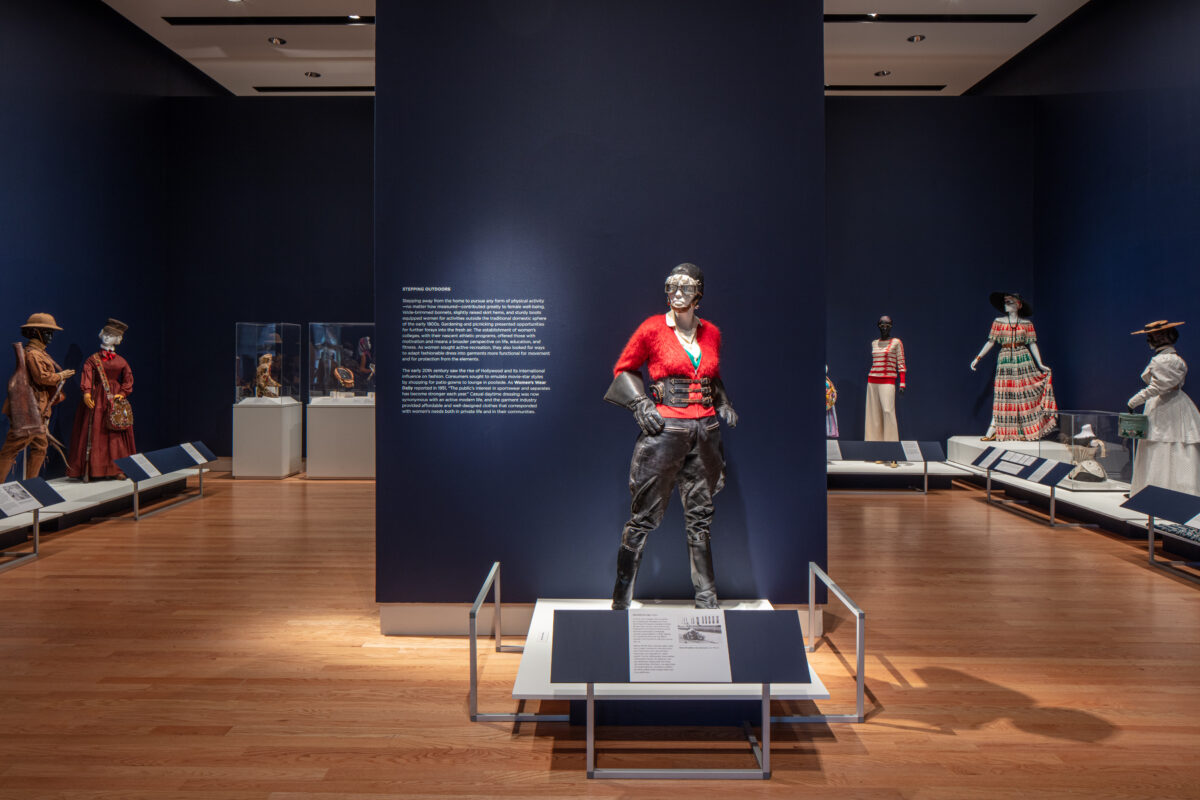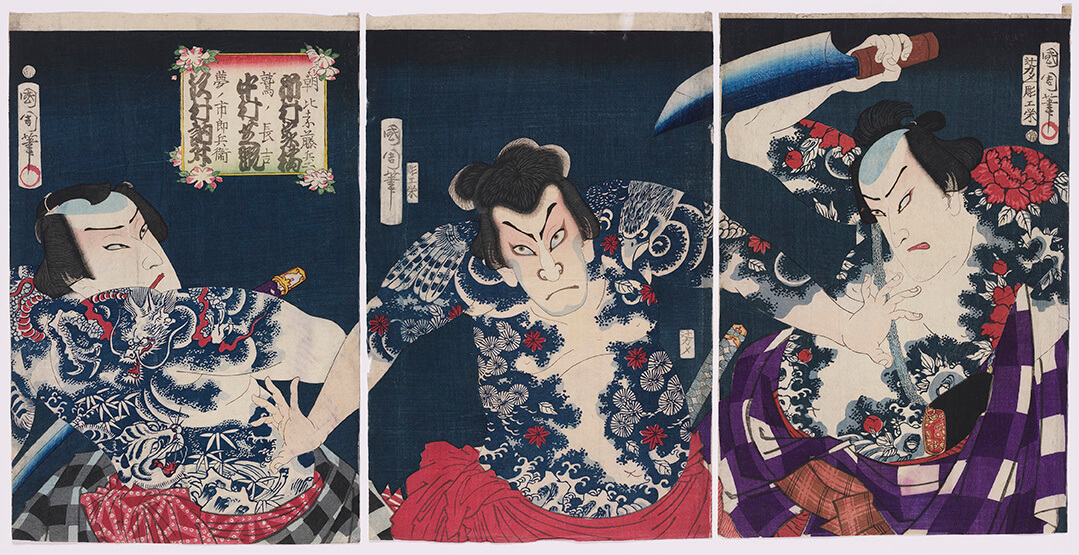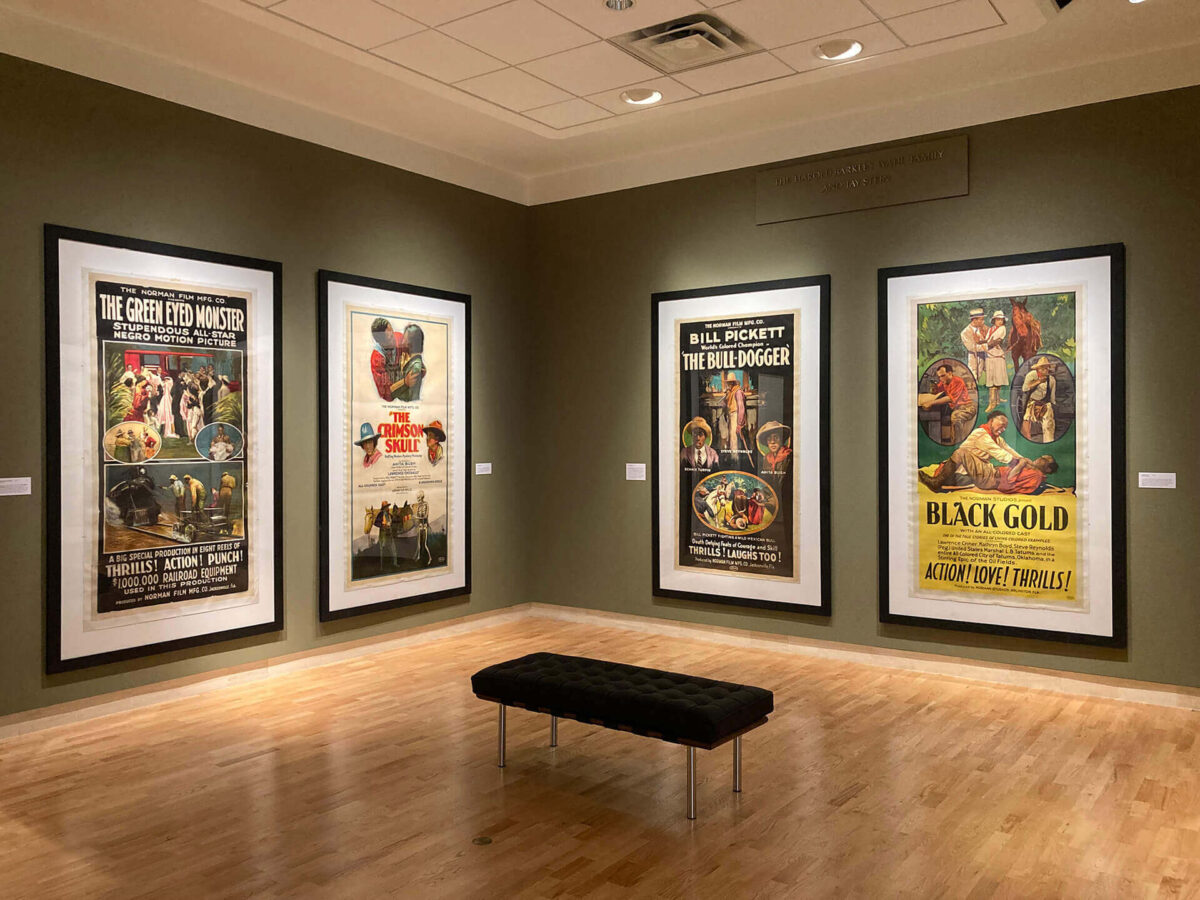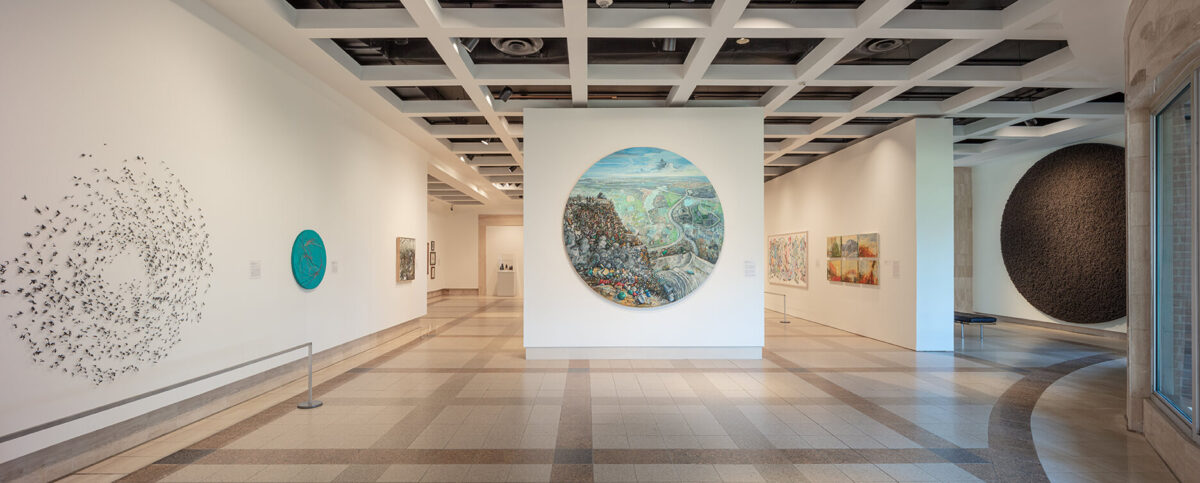Anila Quayyum Agha: Flight Patterns
World-renowned Pakistani American artist Anila Quayyum Agha uses art to explore her dual experiences living in her native country and as an immigrant in the United States. Although inspired by South Asian, Middle Eastern, and North African designs, her work exists outside of a single religious or cultural experience and instead invites viewers to explore the space in between. Agha explores themes around the constructed boundaries of gender, race, religion, culture, and the natural environment that prevent dialogue and exchanges between world civilizations and presents viewers the opportunity to embrace the harmonies that exist within the shadows of cultural divergence.
Curated by Holly Keris, J. Wayne & Delores Barr Weaver Chief Curator of the Museum, the exhibition Flight Patterns features two of Agha’s large sculptural installations. Each is internally lit and projects intricate geometric patterns throughout the gallery enveloping visitors as they view the work. This exhibition also includes a selection of mixed media works and wall sculptures. This immersive experience will allow Museum-goers to be a part of the sculptural shadowplay, and, therefore, become participants in the work itself.
She writes: “The consciousness of knowing what is markedly different about the human experience also bears the gift of knowing its core commonalities and it is these tensions and contradictions that I try to embody in my artwork. Through the use of a variety of media, from large sculptural installations to embroidered drawings I explore the deeply entwined political relationships between gender, culture, religion, our natural environment, labor and social codes. Using embroidery as a drawing medium in the flatworks or via ornately patterned light sculptures, I reveal the multiple layers resulting from the interaction of concept and process and to bridge the gap between modern materials and historical patterns of traditional oppression and domestic servitude. The conceptual ambiguity of the resulting patterns, create an interactive experience in which the onlooker’s subjective experiences of alienation and belonging become part of the piece and its identity.”
This exhibit was organized by the Cummer Museum of Art & Gardens.


